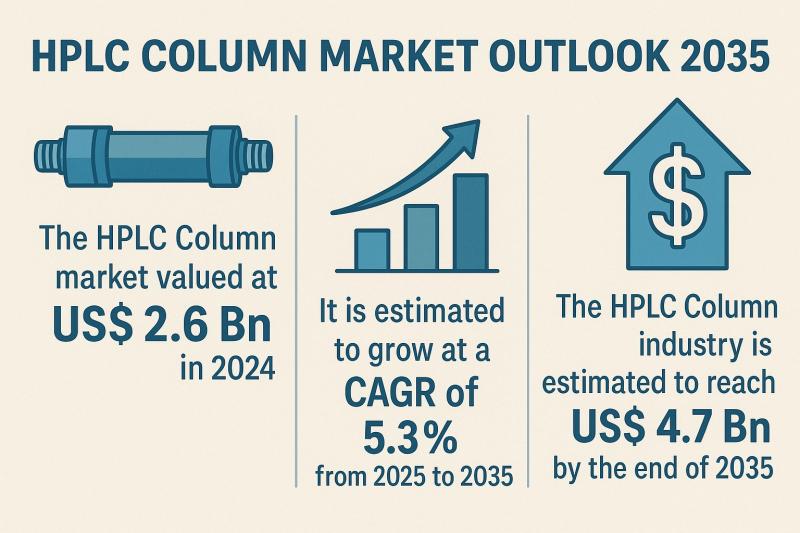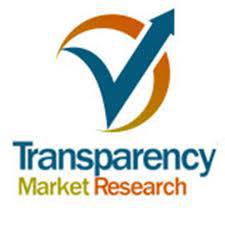Press release
Biodiesel Catalyst Market size and Key Trends in terms of volume and value -2025
Biodiesel can be used as alternative fuel for diesel engines. It is made from recycled cooking oil, soybean oil, and animal fat. Biodiesel is produced through a chemical process called transesterification. Soybean oil can also be substituted with straight vegetable oil, palm oil, or rapeseed oil. The transesterification reaction results in two products: biodiesel and glycerin (byproduct).Straight vegetable oil can directly be used as a substitute for fossil diesel. However, it is relatively viscous and leads to poor atomization of fuel, incomplete combustion, choking of fuel injectors, and accumulation of fuel in lubricating oil. A catalyst, which can either be an acid or a base, performs the function of accelerating the transesterification reaction without actually participating in it.
View Report Preview: https://www.transparencymarketresearch.com/biodiesel-catalyst-market.html
Three basic routes can be employed to produce biodiesel from oils and fat: base catalyzed transesterification of oil, direct acid catalyzed transesterification of oil, and conversion of oil to fatty acids and then to biodiesel. However, base catalyzed transesterification of oil is the commonly used method to produce biodiesel. This process is also economical and requires low temperatures and pressures. During the process, the alcohol reacts with fatty acids to produce biodiesel, which is chemically a mono-alkyl ester and crude glycerol. Methyl ester and ethyl ester are the commonly used biodiesel. Either sodium hydroxide or potassium hydroxide can be used as a catalyst for the production of methyl ester biodiesel. However, potassium hydroxide is more suitable for the production of ethyl ester biodiesel.
Biodiesel offers several advantages. For instance, it is rapidly biodegradable and completely non-toxic. The net output of carbon in the form of carbon dioxide after combustion of biodiesel is also negligible. Therefore, biodiesel is described as being ‘carbon neutral’. Biodiesel reduces greenhouse gas emission by at least 57% and up to 86% compared to petroleum diesel. This makes it one of the practical and cost-effective ways to address climate change. Biodiesel is made from natural renewable resources. It is non-toxic and biodegrades quickly. Thus, use of biodiesel reduces human dependence on imported fuel and lowers the harsh effects of greenhouse gases on the environment. Biodiesel catalysts are easily available and their price is also fairly comparable. Handling biodiesel catalysts is easy, since the catalysts and reactants are in the same phase. These advantages coupled with the increase in need to make use of biodiesel as fuel is expected to boost the biodiesel catalyst market in the next few years.
Homogeneous catalysts used in the production of biodiesel face certain disadvantages. When acid catalyst is used, water gets formed during acid esterification. This hampers the process, thereby adding to the cost. Sulfuric acid and sodium methylate, if used as catalysts, are corrosive. Thus, they are difficult to handle. Sodium methylate poses handling problems, as it absorbs moisture. Thus, it has to be continuously kept under a nitrogen blanket. These minor drawbacks are likely to hamper the biodiesel catalyst market in the near future.
Based on type, the biodiesel catalyst market can be bifurcated into homogeneous catalysts, which were traditionally used in the transesterification reaction for producing biodiesel; and heterogeneous catalysts, which are currently being used for producing biodiesel. Homogeneous catalysts function in a single, uniform phase (liquid, gaseous, etc.) as a reactant. Usually, homogeneous catalyst is dissolved in the solvent. In case of heterogeneous catalysts, the phase of the catalyst and the reactant are different. Heterogeneous catalysts usually exist in the solid state. These heterogeneous catalysts act on the substrate in a liquid or gaseous reaction mixture. Homogeneous and heterogeneous catalysts can be classified into acid catalyst and base catalyst. Sodium hydroxide and potassium hydroxide are used as alkaline homogeneous catalysts. In cases involving high content of free fatty acids during biodiesel production, sulfuric acid is used as a catalyst during the esterification process, while sodium methylate is employed as a catalyst during transesterification.
Several improvements are being carried out to improve the performance of biodiesel catalysts. For instance, JatroDiesel has developed heterogeneous catalysts, which are recyclable. These heterogeneous catalysts provide significant cost and operational advantage.
Based on geography, the biodiesel catalyst market can be segmented into North America, Latin America, Europe, Asia Pacific, and Middle East & Africa. The biodiesel catalyst market is seen to provide job opportunities in numerous sectors like agriculture, chemicals, biotechnology and many more in developing nations in India and China. This is assumed to boost up the biodiesel catalyst market in Asia Pacific. Abundant availability of rapeseed oil is anticipated to propel the biodiesel catalyst market in Europe. Rise in technological advancements is estimated to offer lucrative opportunities to the biodiesel catalyst market in North America in the near future.
Key players operating in the biodiesel catalyst market include Evonik Industries, BASF Corporation, TSS Group, Dupont, DOW Chemical Company, Albemarle Corporation, Sud-Chemie Chemicals.
Request to view Sample Report: https://www.transparencymarketresearch.com/sample/sample.php?flag=B&rep_id=30221
The report offers a comprehensive evaluation of the market. It does so via in-depth qualitative insights, historical data, and verifiable projections about market size. The projections featured in the report have been derived using proven research methodologies and assumptions. By doing so, the research report serves as a repository of analysis and information for every facet of the market, including but not limited to: Regional markets, technology, types, and applications.
About Us
Transparency Market Research (TMR) is a market intelligence company, providing global business information reports and services. Our exclusive blend of quantitative forecasting and trends analysis provides forward-looking insight for thousands of decision makers. TMR's experienced team of Analysts, Researchers, and Consultants, use proprietary data sources and various tools and techniques to gather and analyze information.
Our data repository is continuously updated and revised by a team of research experts, so that it always reflects the latest trends and information. With a broad research and analysis capability, Transparency Market Research employs rigorous primary and secondary research techniques in developing distinctive data sets and research material for business reports.
Contact Us
Transparency Market Research
90 State Street, Suite 700
Albany, NY 12207
Tel: +1-518-618-1030
USA - Canada Toll Free: 866-552-3453
Email: sales@transparencymarketresearch.com
Website: http://www.transparencymarketresearch.com/
This release was published on openPR.
Permanent link to this press release:
Copy
Please set a link in the press area of your homepage to this press release on openPR. openPR disclaims liability for any content contained in this release.
You can edit or delete your press release Biodiesel Catalyst Market size and Key Trends in terms of volume and value -2025 here
News-ID: 1000718 • Views: …
More Releases from Transparency Market Research

Europe Anti-slip Paper Market Valuation Set to Reach USD 450.1 Million by 2035, …
The Europe Anti-slip Paper Market is poised for robust growth over the forecast period, driven by rising demand for sustainable, efficient, and safe packaging solutions across industries. Valued at US$ 214.4 Mn in 2024, the market is projected to almost double and touch US$ 450.1 Mn by 2035, registering a CAGR of 7.0% from 2025 to 2035. This growth is supported by stringent regulatory frameworks, the rapid expansion of e-Commerce,…

Ethyl Acetate Market Outlook 2035: Global Valuation to Reach USD 15.1 Billion Am …
The global ethyl acetate market is entering a phase of sustained expansion driven by strong industrial demand and accelerating adoption of green, sustainable solvents. Valued at US$ 6.5 Bn in 2024, the market is projected to expand at a CAGR of 8.0% from 2025 to 2035, ultimately reaching US$ 15.1 Bn by 2035. This growth reflects rising use across paints and coatings, adhesives, pharmaceuticals, packaging, and the food & beverage…

HPLC Column Market Outlook 2035: Global Industry to Reach USD 4.7 Billion by 203 …
The global HPLC Column Market is poised for steady and sustained growth through 2035, supported by rising demand for analytical testing across pharmaceutical, biotechnology, food and beverages, and environmental sectors. Valued at US$ 2.6 Bn in 2024, the industry is projected to reach US$ 4.7 Bn by 2035, expanding at a CAGR of 5.3% from 2025 to 2035. Increasing regulatory compliance, technological advancements in column design, and growing applications in…

Carboxylic Acid Market Outlook 2035: Global Market to Reach USD 12.9 Billion by …
The global carboxylic acid market continues to gain momentum as demand surges across diverse industrial applications. Valued at US$ 6.6 Bn in 2024, the market is projected to expand at a CAGR of 6.3% between 2025 and 2035, ultimately reaching US$ 12.9 Bn by 2035. This strong growth trajectory is driven by the rising consumption of carboxylic acids in chemicals, food and beverages, pharmaceuticals, agriculture, personal care, and industrial manufacturing.…
More Releases for Biodiesel
A Complete Guide to Biodiesel
Biodiesel is a renewable fuel produced from renewable sources such as vegetable oils, animal fats, and recycled cooking oil. It works seamlessly with existing diesel engines and diesel vehicles. It is mainly used as a blend with petroleum diesel fuel in diesel vehicles. Biodiesel is known to increase the cetane number of the fuel and increase fuel lubricity. It is utilized as an alternative biofuel in existing diesel engines without…
Biodiesel Price Trend Analysis
Biodiesel is a renewable fuel produced from various feedstocks, including vegetable oils, animal fats, and recycled cooking oils. It can be blended with petroleum diesel or used as a complete substitute in diesel engines. As a renewable alternative to fossil fuels, biodiesel plays an important role in reducing greenhouse gas emissions and decreasing dependence on crude oil. Because of these environmental benefits, many countries support biodiesel production through renewable energy…
Factors Influencing Global Waste Grease Biodiesel Market through 2023 and Beyond …
Global Waste Grease Biodiesel Market Research Report provides a key analysis of the market status of Waste Grease Biodiesel with the best facts and figures, meaning, definition, SWOT analysis, expert opinions, and the latest developments across the globe. The report also calculates the market size, Sales, Price, Revenue, Gross Margin, Market Share, cost structure, and growth rate. The report considers the revenue generated from the sales of This Report and…
Global Biodiesel Market 2020 Business Strategies – Delta American Fuel, Wester …
The Zion Market Research added a new report “Global Biodiesel Market - By Application (Power Generation, Fuel, And Others); By Production Technology (Trans-Esterification, Pyrolysis, And Others); By Feedstock Type (Animal Fats, Vegetable Oils, And Others); By Blend (B5, B10, B20, And B100); And By Region- Global Industry Perspective, Comprehensive Analysis, and Forecast, 2020 – 2026” in its database, which provides an expert and in-depth analysis of key business trends and…
Biodiesel Processing Unit
While reserves of petroleum are decreasing every passing day, energy consumption is increasing at 6.5% per annum. And for solving this issue many countries are implementing new policies for minimizing the usage of fossil fuels and increase the use of alternative sources like solar power and Biodiesel. Biodiesel is a diesel fuel substitute made from a variety of oils, fats, and greases which can become a cheaper alternative to fossil…
Biodiesel Market Growth and Industry Key Players are Western Dubuque Biodiesel, …
Global Biodiesel Market size is expected to move up at a moderate rate in the next few years. Biodiesel is derived from animal fats, cooking oils, yellow grease, and vegetable oils by a process known as transesterification which converts fats and oils into chemicals. It is a substitute fuel similar to fossil or conventional fuels.
Need for energy independence and increasing environmental concern have driven the demand for biodiesel market…
